New Digital Art Frame Gets Put to the Test
I was reading my Sunday newspaper when I encountered a striking Moholy-Nagy print in the arts section. A minute later, it was displayed on my wall.
That’s the moment I was hooked on Electric Objects’ new EO1, a $499 digital art frame that displays art, photos, GIFs and videos found on the Internet, available within the EO1 app or uploaded from your phone or computer. In truth, I was an enthusiast 10 minutes after taking the device out of the box. That’s how long it took to place it on the stand, plug it in, download the app, connect it to my Wi-Fi and start displaying images.
This spring I wrote about the development of high-end digital art displays by companies including Electric Objects, Framed, Depict, Meural and Canviz. Being a video artist as well as a writer, I wanted to experience for myself this new way of displaying art. I chose the EO1 as it was one of the first available and most affordable.
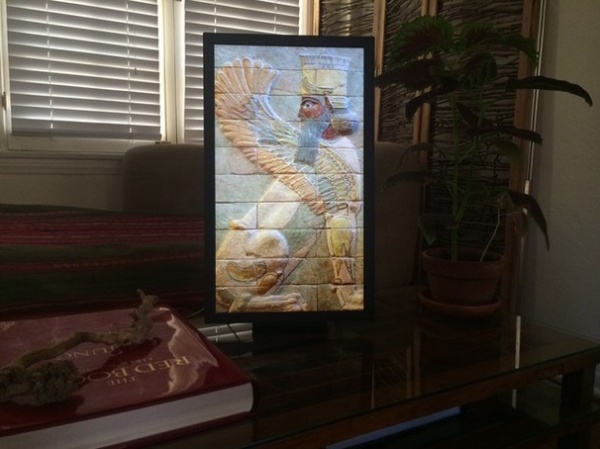
My new digital art screen felt like a new toy, at least during that first week, when I changed the display about every five minutes. Although clearly a disruptive technology, high-end digital art frames also are termed “calm technology.” The Wi-Fi-enabled frames are said to be passive, existing on the periphery: no audio, no browser, only the image on the screen. I got to the calm part about two weeks later, when I lived with digital images for days at a time.
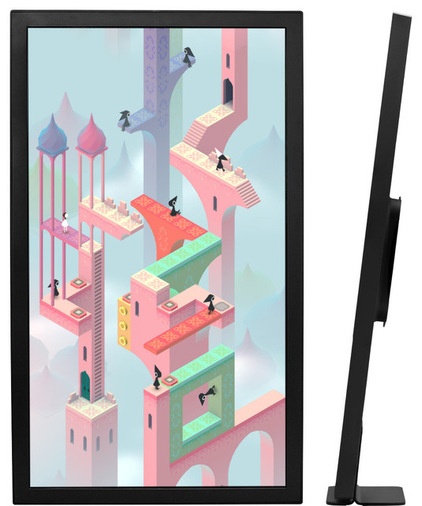
Out-of-Box Experience
The EO1 is nicely packaged in two nested boxes, and includes a screen-size art poster to help users determine the best location. A pamphlet provides instructions on how to download the app for iPhone or Android devices, create an account and connect your Wi-Fi, and hang the device. The portrait-oriented matte HD display measures about 22 by 13 inches and is estimated to last about 30,000 hours, or nearly seven years if turned off at night. It has an energy output comparable to 35 watts. A capacitive touch button on the screen’s top shuts off the display.
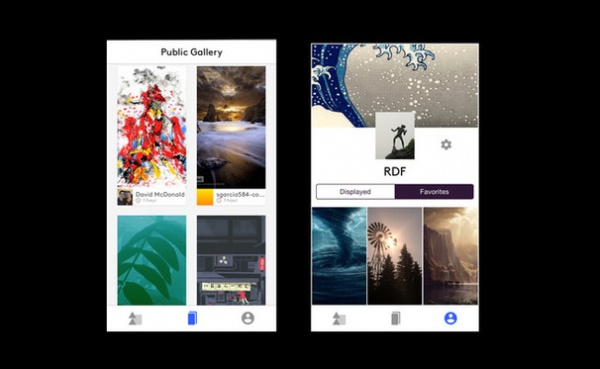
App’s a Snap
The app or browser interface is easy to navigate: Browse the public gallery, packed with looping GIFs and images that can be displayed and “favorited” to your own list. Auto-brightness settings allow for low, medium or high brightness or none. You can also set a sleep and wake timer. Set your account to private, or to public, where others can see and favorite your choices.
The looping GIFs found on EO1’s public wall range from the sublime to the silly, the meditative to the manic. Two of my favorites are shown in the video above. GIFs are the medium of the moment, and they’re a fun occasional alternative to still images. EO1 also supports video, but the GIFs are far more popular.

Where to Display It
My one-bedroom apartment is 550 square feet, so I knew a digital art frame was likely to pull focus no matter where I placed it. I first hung it on a wall, but was concerned about the black cord’s standing out. So I painted the cord the same warm white as my walls, and it nearly disappeared. (The company now ships a white cord upon request.) Some users drill a hole behind the device and install an outlet, or they snake cords through walls to outlets. After a few days, the wall placement felt a bit lonely, so the frame now lives on a stand placed on a high table in the corner of my living room.
The EO1 comes with a mount that pushes the device out from the wall an inch or more. A level is thoughtfully built into the mount, and a pencil is attached for measurements. “We wanted to communicate from the beginning that this was an artful experience,” says Jake Levine, founder of New York-based Electric Objects. The device can be ordered with a black or white magnet frame, which easily pops out for interchange.
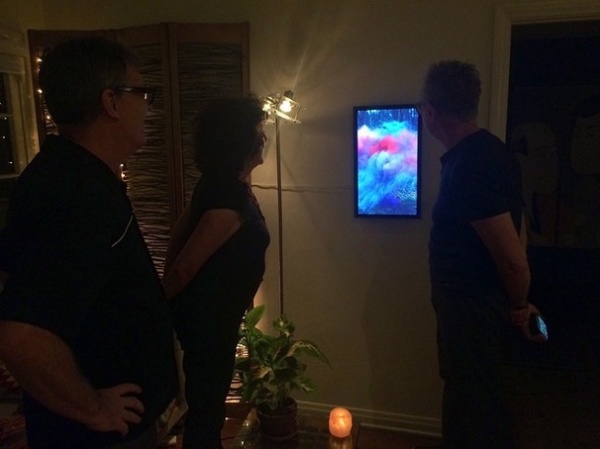
Dinner-Party Test
How would others in my circle react to the digital display? I invited six artists over for the ultimate dinner-party test. I also uploaded photographs of their work onto the app to gauge their reactions, especially in terms of resolution and overall image quality. Among the first reactions to the display: “I’d like to see something bigger.” That was also my first thought upon unboxing the display; it was smaller than I expected. The conversation then turned to expectations of video: bigger being better. “I’d like to see a whole video wall,” one painter said. In truth, the display was a bit small for the wall I had placed it on. Currently it looks perfect on its stand in a smaller corner alcove space.

That same artist said, “Why not an app that displays images on my computer. Why do I need another screen?” Streamed art for TVs and computers is a service I discussed in a previous Houzz story on framed digital art. “Would you really use that?” I asked. He said no, mainly because who wants to have their computer screen blazing all day long? It’s for computing, not displaying art. I have to agree with Electric Objects’ manifesto about the utilitarian advantages of a dedicated screen for digital art.
I displayed the artists’ works, turning the evening into an art salon, which was a nice detour. I had an ulterior motive: How would these artists rank the image quality –– most especially of their own work? “The color, the definition –– it looks spectacular,” a mixed-media artist and fine arts teacher said. “Very crisp and incredibly accurate.” Everyone agreed. The screen resolution was stellar.

A few present wanted the option of changing the image automatically, such as every hour or every morning. But Electric Objects, which launched in 2013, oddly frowns on anything that veers into slideshow territory. A question on its FAQ page is, “Can I display all my images in a slideshow?” The wry answer: “Slideshows are not as awesome as you think.”
The company seems extra alert about its device not being used like those inexpensive digital photo frames designed to sit on tables, rotating an endless train of family photos. The EO1 is engineered for fine art and photos, not fun and fast slideshows, according to Electric Objects. After two weeks with the EO1, I’ve outgrown the initial, “gotta have an image every five minutes” stage. I desire longer viewing times, which currently last a single day. That seems a natural switch point, at least for myself: a new day, a new image. But it wouldn’t hurt to be able to schedule images in advance, instead of having to do it manually every time.
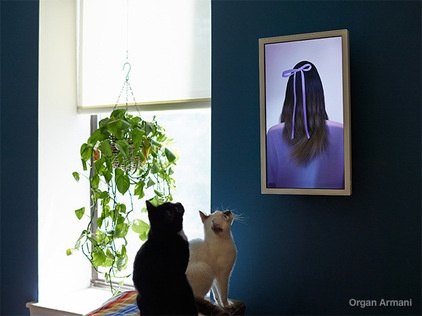
A Social Experience
The EO1 is inherently social, since you can browse the public gallery to discover the image titles, artists and length of time users have displayed the image. The window also lists who currently is displaying the image, as well as past user displays. Click on any public user’s account to see what art her or she has displayed and favorited –– and favorite and display it yourself if you choose. Set your account to private, and all of your activity will be hidden.
“As our community grows, the public gallery feed grows, so we may introduce a ‘follow’ feature,” Levine says. The EO1 app is awash with images –– and tastes –– so the ability to follow a user’s choices would be optimal. There are no plans for a “like” button.
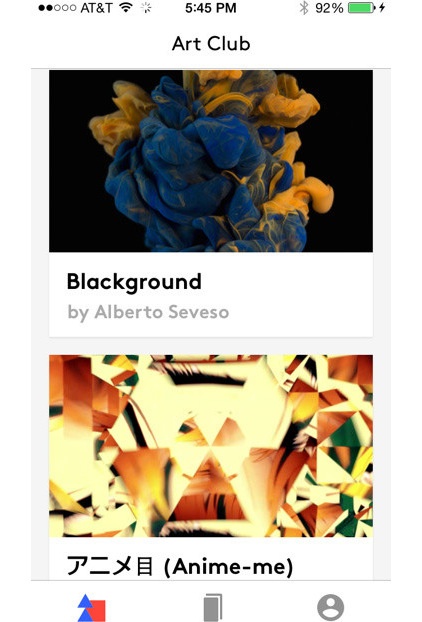
Art Club
The EO1 also offers Art Club, a collection of images and video works by about 30 artists, designed specifically for Electric Objects. Partnerships include the Cooper-Hewitt Design Museum, Tumblr and the New York Public Library. Art Club is currently a no-cost service, but Electric Objects plans to launch a monthly subscription to the images in the future.
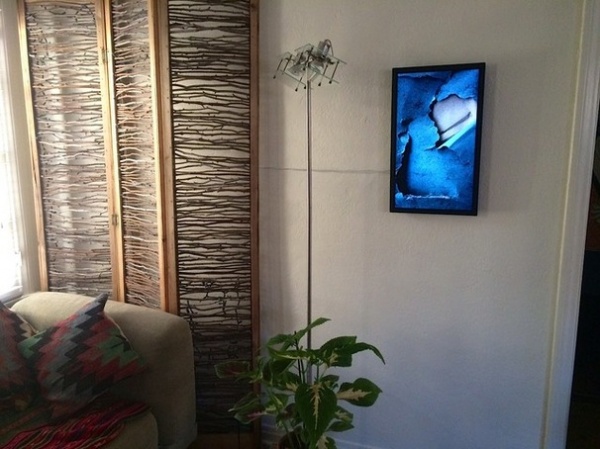
Out of the Phone, Onto the Wall
Digital art frames are being designed primarily to free the untold images that live within our phones, tablets and laptops and on the Internet. Once I began using the EO1 device, this reasoning became clear. Like most people, I digitally store innumerable images, photos and copies of artworks. Among the first images I displayed was a stock photo of a torn piece of blue paper, seen in the photo above. I’ve had that image for about 10 years, have always loved it and seldom saw it. Now it lives on my EO1 app. I can view it anytime.
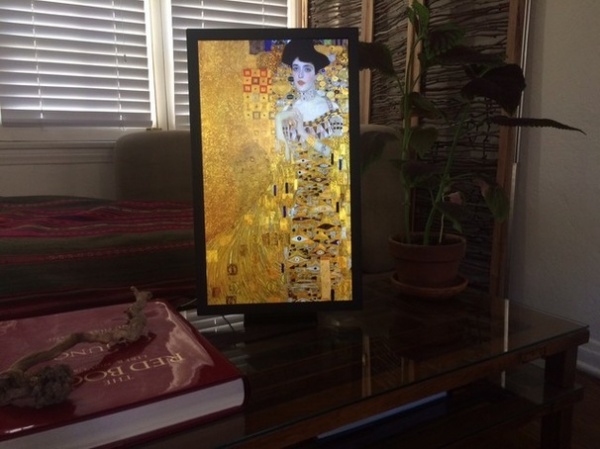
I continually add images to the app: those found on the public gallery, within my warren of computer files and on the Internet or in the Sunday newspaper. My framed copy of The Woman in Gold by Gustav Klimt is now just a click away –– along with the rest of the world’s art. Clearly, the curation process of stocking one’s device is endless, and yet it doesn’t feel like a time suck. The process of uploading and displaying images is simple and fast.
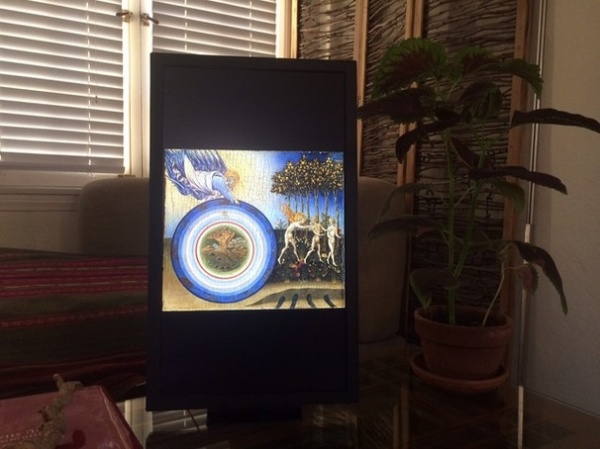
Upload Experience
Images, GIFs and image URLs are uploaded through Electric Objects’ website, with a cap at 5 gigabytes per account. An upload, limited to 20 megabytes, can be marked as public or private. The device best displays images cropped to 1080 by 1920 pixels. “Zoom to fill” and “center” options are listed for images out of that size range. The images live on Electric Objects’ server and take a few seconds to display once chosen. The company plans to pre-cache popular public works for faster uploads in the future.
Levine says his company is working on upgrades to the app and the overall experience, including the ability to delete images, a progress meter for uploads, enhanced editing and larger upload sizes, among other improvements.
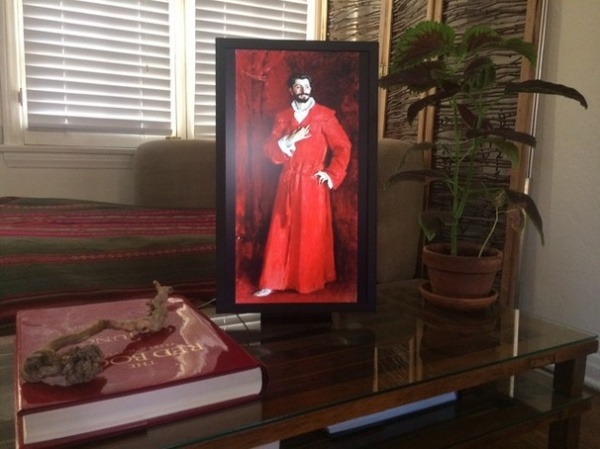
Who is the EO1 Right For?
Since I’m a video artist as well as a writer, the idea of owning a digital art frame is a natural choice for me. Digital natives would, I think, naturally gravitate to the EO1, as well as artists. Most everyone, however, lives with numerous screens today, so the idea of introducing another into the home could be a natural choice for others –– especially if it’s solely for showing favorite images that are otherwise inaccessible.
Those who are not tech savvy may not like the EO1, not because it’s complicated to set-up or operate (it’s easy) but simply because they may not want another device in their home. “Do I really need another kitchen appliance?” might be a parallel line of thinking.
Pros
Easy set-up and easy app navigation Easy to mount on wallsDurable stand for tables and shelvesImage resolution is high –– crisp and accurateAuto brightness feature keeps the image stable in various light conditionsThe convenient sleep and wake timerThe public gallery is stocked with numerous inventive images you can favorite and displayLow energy useMagnet-held frames are easily switchedCons
Some may think the device is a bit smallThe EO1’s lifespan is about seven yearsThat pesky cord that trails out from the EO1 when it’s hung on wallsThe portrait-oriented device constrains all images to vertical displaysUpgrades to the app will occur, but currently it’s not possible to schedule automatic image changes, upload images through the app, delete your uploaded images or view progress during uploads The EO1 has begun shipping on demand this month through the Electric Objects site.
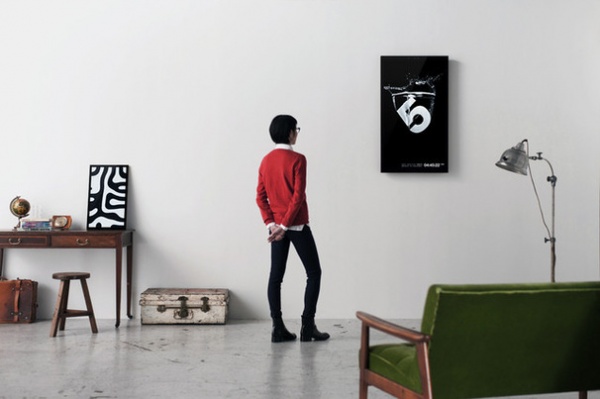
Other Framed Digital Art Devices
My previous report describes four other companies that plan to launch digital art frames. Here’s where they stand in terms of orders and ship times.
• Tokyo-based Framed is offering its $899 portrait frame through the online MoMa store. The device arrives loaded with six digital artworks; additional works can be purchased on the Framed website. The Wi-Fi-enabled device is smartphone-integrated and has a 23-by-13-inch frame made of handcrafted walnut.
• Depict is taking preorders for its higher-end $1,800 HD 4-kilobyte matte-finish display (47 by 28½ inches), which is scheduled to begin shipping by late September. An app or a browser controls the device, and the display is paired with the free Depict cloud service, through which artwork and video can be purchased and stored. A $15-a-month subscription allows access to a curated library of works.
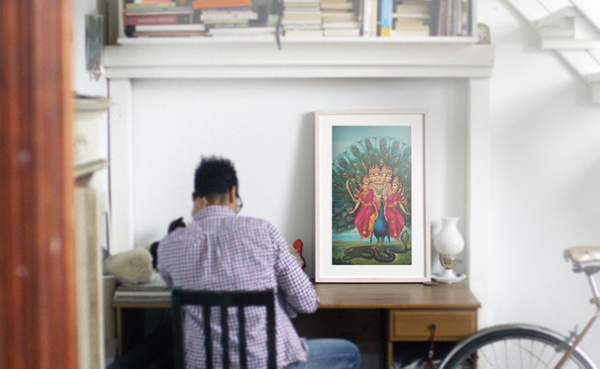
• Meural is taking preorders for its $445 gesture-activated 32-by-21-inch display, which can be oriented in portrait or landscape mode. Users can upload their own images or access the Meural library, which sources works from museums ($4.95 for a monthly subscription after one free year). Shipments are expected to begin in November 2015.
• Canviz will soon release a video detailing its portrait- and poster-size displays: 14 by 22 inches ($349) and 22 by 37 inches ($549). The firm says it hopes to scale up production, depending on funding, so orders can be placed in the future. The frame will be available in a black or natural wood finish. The Canviz library of images and video, sourced from selected artists, will initially be offered free to buyers. “Our goal is to make Canviz as widely available as possible,” Canviz designer Matt Waters says.
More: Is the Timing Finally Right for Framed Digital Art?












